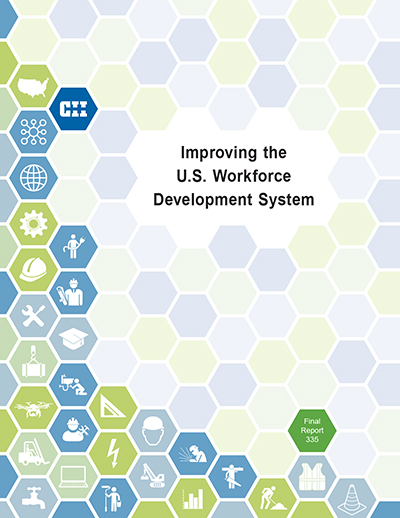
Restoring the Dignity of Work: Transforming the U.S. Workforce Development System into a World Leader
We have become poor stewards of our nation’s infrastructure system. We are the nation whose transportation system was the envy of most other countries having built infrastructure achievements ranging from the transcontinental railroad to the interstate highway system. These achievements helped put in motion our nation’s long-term pathway toward prosperity. Somewhere along the way we became distracted and have allowed the quality of our nation’s infrastructure system to slip; the quality of our roads is now rated 14th in the world. Furthermore, the nation’s transportation system is indicative of the current state of the nation’s infrastructure system, including its public water, sewer and civil works. Based on the latest evaluation of the nation’s infrastructure system as rated by the American Society of Civil Engineering, all of the states involved in the evaluation had their infrastructure systems rated as a C or lower.
The erosion of our nation’s infrastructure is obviously not the only challenge facing our industry and nation. With increased urbanization, our nation’s health hinges on the ability to build affordable housing and new communities where none exists today. The nation’s science, technology, engineering and math (STEM) economy continues to be a world leader in developing innovations that have potential to improve the health and safety of future societies; however, we must have a robust construction industry to build the facilities that harbor these innovations.
At the crossroads of future innovations and a robust future society lies the nation’s construction industry, where everything starts. Ideas are evolved into designs that are transformed into a physical reality. All the promises of infrastructure renewal and the growth of our economy assumes that construction has a viable and qualified workforce.
The United States’ workforce development system desperately needs to be overhauled to address these challenges. As a process, workforce development includes the recruitment, training, placement and retention of individuals in gainful employment opportunities. Revitalizing our nation’s workforce development system is the path forward toward addressing not only the shortage of skilled construction craft professionals but also the nation’s skills shortages throughout numerous other industries that are highly dependent on skilled professionals. The effort will require new approaches in how we communicate career opportunities to potential labor market entries and our youth in secondary and postsecondary education, as well as those already in work-based learning among other initiatives.
To define this path forward, a series of policies have been identified that affect industry stakeholders and governmental agencies. Considering the relative benefits and costs with each policy, the policies have been organized among those that can be implemented in the short-term (less than three years) and those that will require a longer-term effort to implement.



